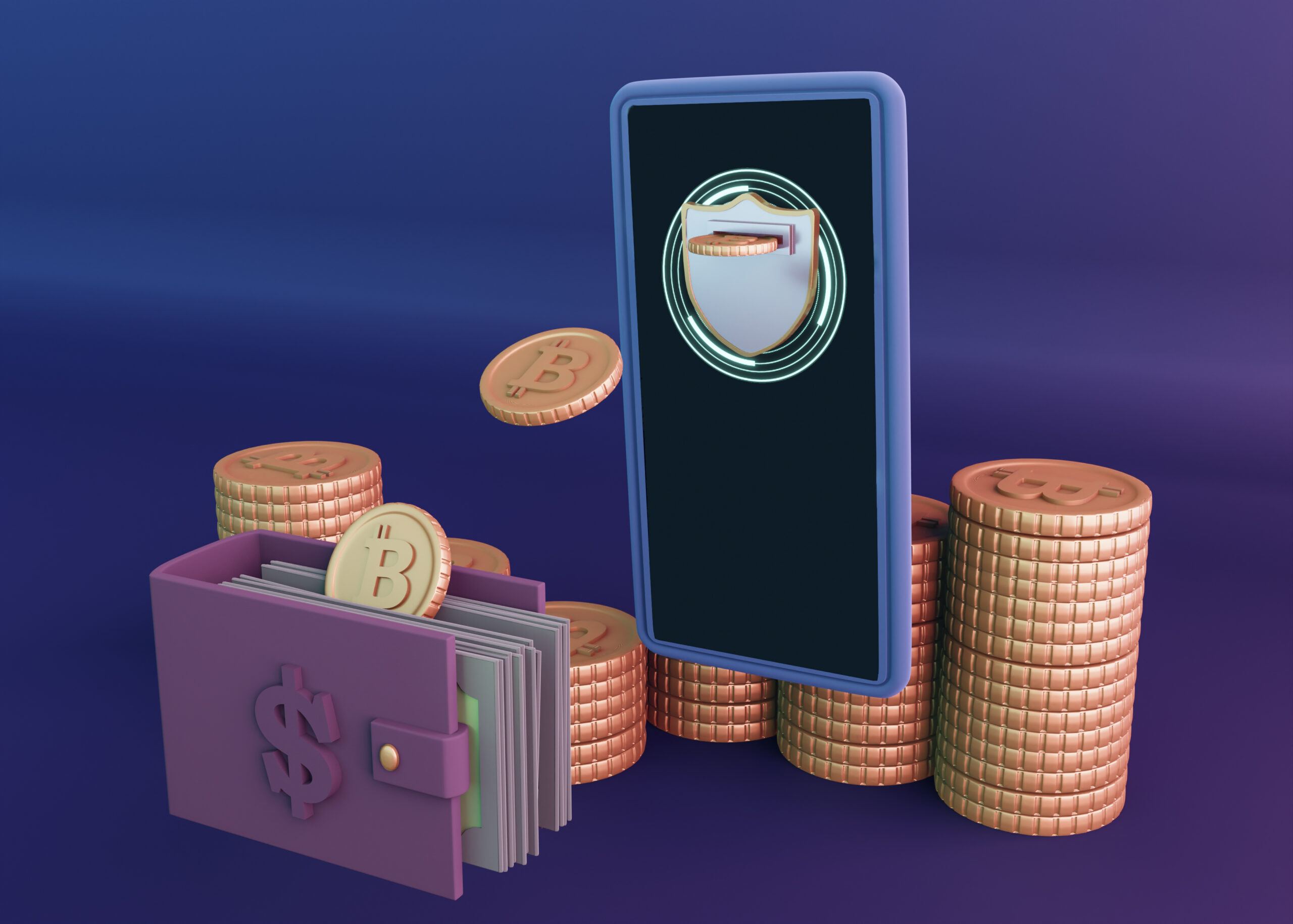Rise of Decentralized Finance (DeFi)
In the fast-changing world of finance, a big change is happening – the rise of Decentralized Finance (DeFi). It’s powered by blockchain technology. DeFi is changing the old banking and finance systems, bringing new open, clear, and easy-to-use financial services. This new world gives people more control over their money, something big banks used to have all to themselves.

Exploring the Rise of Decentralized Finance (DeFi)
At the core of DeFi is the idea of making finance decentralized. This means people can do transactions directly with each other, lend and borrow cryptocurrencies, and use decentralized exchanges (DEXs) and liquidity pools. Thanks to smart contracts and blockchain, DeFi is changing how we lend, borrow, trade, and even invest in unique digital items (NFTs) – all without needing big banks in the middle.
The growth of DeFi has been amazing, with over $200 billion in value locked in DeFi protocols in 2022. This huge growth shows more and more people want financial solutions that are open, easy to use, and fair. As DeFi keeps growing, it’s set to change the financial world, opening up new chances for both everyday people and big investors.
Key Takeaways
- Decentralized Finance (DeFi) is a new financial tech that uses blockchain for open, clear, and easy-to-use financial services.
- DeFi makes it possible for people to do transactions directly with each other, lend and borrow cryptocurrencies, and use decentralized exchanges (DEXs) and liquidity pools, changing traditional banking and finance.
- The total value locked (TVL) in DeFi protocols has gone over $200 billion, showing the growing need for open and empowering financial solutions.
- DeFi is changing how we think about lending, borrowing, trading, and investing, offering new chances for both everyday people and big investors.
- The rise of DeFi shows the power of blockchain in changing the financial world and giving people more power.
Decentralizing Finance: The Blockchain Revolution
The rise of blockchain technology has brought a new era of financial innovation. This era is called decentralized finance (DeFi). DeFi aims to change the traditional financial world by giving power to individuals. It also removes the need for central banks and other middlemen.
Understanding Decentralized Finance (DeFi)
DeFi is all about creating a financial world that is open, clear, and easy to get into. It uses smart contracts. These are digital agreements that work on their own. They help with financial tasks without needing banks or other big financial companies.
DeFi lets people do many financial things. They can lend and borrow money, trade, and more. All this happens on platforms that don’t need a central boss.
The Role of Blockchain Technology
Blockchain is the key to DeFi. It makes sure financial activities are safe, clear, and can’t be changed. Because blockchain is spread out, it doesn’t need one person or group to keep track of money.
Blockchain and DeFi together have opened up new ways to do finance. Now, people and businesses can easily get into financial services. They have more control, see things clearly, and can do things faster.
| Feature | Traditional Finance | Decentralized Finance (DeFi) |
|---|---|---|
| Accessibility | Limited to those with access to traditional financial institutions | Widely accessible, with low barriers to entry |
| Transparency | Opaque, with limited information and control for users | Highly transparent, with open-source code and publicly verifiable transactions |
| Intermediaries | Heavily reliant on centralized intermediaries (banks, brokers, etc.) | Eliminates the need for intermediaries, with peer-to-peer and decentralized interactions |
| Innovation | Slow-moving and limited by legacy systems | Rapid innovation, with the development of new financial products and services |
The blockchain revolution is changing finance. It’s making finance more open, fair, and full of new ideas. This change is giving power to people and making finance better for everyone.

The Rise of Decentralized Finance (DeFi)
The finance world is changing fast, thanks to decentralized finance (DeFi). This new system uses blockchain technology to change how we handle money. Key parts like yield farming, liquidity pools, and non-fungible tokens (NFTs) are driving this change.
Yield farming lets people manage their crypto to get the best returns. By adding liquidity to apps, users earn special tokens. This has drawn in many investors, making DeFi grow even faster.
Liquidity pools are essential for decentralized exchanges (DEXs). They combine user funds for easy trading without a middleman. This has made trading smoother and encouraged more people to join DeFi.
NFTs bring a new level of excitement to DeFi. These unique digital assets are used in art, collectibles, and even real estate. Now, NFT owners can use them as collateral for loans, mixing the digital and physical worlds.
The future of DeFi looks bright. It’s not just a trend but a major change in finance. Blockchain technology is making DeFi a place of endless innovation, access, and openness.

| Metric | Value |
|---|---|
| Total Value Locked (TVL) in DeFi | $100 billion |
| Number of DeFi Users | 2.5 million |
| Annualized Yield from Yield Farming | 20-100% |
| Growth in Liquidity Pools | 400% in the past year |
“The rise of decentralized finance (DeFi) is a testament to the transformative power of blockchain technology. By empowering users to take control of their financial assets and engage in a more transparent and inclusive financial ecosystem, DeFi is poised to reshape the global financial landscape.”
Innovative DeFi Applications
The world of decentralized finance (DeFi) is full of new ideas. Peer-to-peer lending and cryptocurrency lending are changing how we handle money. These changes are making finance more accessible and flexible.
Peer-to-Peer Lending and Cryptocurrency Lending
Platforms like Aave and Compound let you lend and borrow cryptocurrencies directly. This cuts out the middleman, giving you more control and better rates. Services like BlockFi and Celsius Network also let you earn interest on your digital assets, offering a new way to save.
Decentralized Exchanges (DEXs) and Liquidity Pools
Decentralized exchanges (DEXs) like Uniswap and Sushiswap are key in DeFi. They let you trade cryptocurrencies without a central authority. They use liquidity pools for peer-to-peer trading, rewarding those who provide assets for trades.
More Articles
FAQ
What is decentralized finance (DeFi)?
DeFi is a new financial system built on blockchain. It offers open, transparent, and accessible financial services. It aims to make finance more democratic, empowering people to manage their money.
How does blockchain technology enable DeFi?
Blockchain is the base of DeFi. It ensures a secure, open, and shared record. This tech lets us create and use smart contracts and apps, leading to new financial products and services.
What are some of the key DeFi applications?
Key DeFi apps include peer-to-peer lending and cryptocurrency lending. There are also decentralized exchanges (DEXs), liquidity pools, and yield farming. These tools are changing traditional finance, offering new ways for people to engage with money.
What is yield farming in the context of DeFi?
Yield farming is a strategy in DeFi. It involves using digital assets in various DeFi protocols to earn rewards. Users can earn passive income by providing liquidity to platforms.
How do decentralized exchanges (DEXs) and liquidity pools work in DeFi?
DEXs and liquidity pools are key in DeFi. DEXs let people trade cryptocurrencies without a middleman. Liquidity pools are collections of assets that help with trading on DEXs.


